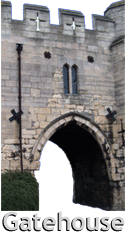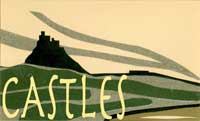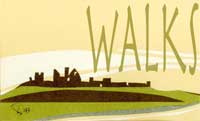|
|
|||||||||||||||||||||||||||||||||||||
|
|||||||||||||||||||||||||||||||||||||
 |
|||||||||||||||||||||||||||||||||||||
|
|
|||||||||||||||||||||||||||||||||||||
 |
|||||||||||||||||||||||||||||||||||||
 |
 |
||||||||||||||||||||||||||||||||||||
 |
|||||||||||||||||||||||||||||||||||||
 |
|||||||||||||||||||||||||||||||||||||
|
NZ 141791/ Habitable/ Private House Ogle Castle is a moated site situated on the left bank of the Ogle Burn. Sir Robert Ogle was granted a licence to crenellate in 1341. David II of Scotland was brought here having been captured at the battle of Neville's Cross in 1346. Only the west wing remains from that period, this was the tower house which had a projecting latrine. Still showing on the western and northern sides are parts of a double moat around a platform 45M across. The rest of the house appears to be 16th and 17th century work. Following the death in 1629 of Catherine youngest daughter of Lord Cuthbert Ogle the Castle passed to William Cavendish, Earl of Newcastle upon Tyne. It was sold to James Moseley having been confiscated by Parliament in 1653. Moseley made the Castle habitable again following damage caused during the Civil War. Before that damage there would have been a curtain wall flanked by D shaped towers and an outer wall on the bank between the moats. In the 1660s Earl William got the castle back and was created a Duke. Part of a round tower was was situated west of the house in the 1780s. The Castle was purchased in 1809 by Thomas Brown. It later came into the hands of the Piele family and is currently owned and occupied by the Boanas family. From the Gatehouse:- At the eastern end of the north row of the deserted medieval village of Ogle are the remains of a large enclosure bounded by an earthen bank standing to a height of 1m. Within the enclosure are the partially infilled remains of a double moated site. Part of the inner moat on the northern side and all of its western arm survive well where they are on average 2m deep. At the north west corner the inner moat stands up to 4m deep. Part of the southern arm of the outer moat also survives as a slight earthwork 0.4m deep. Also known as, or recorded in historical documents as; Oggle; Ogill |
|||||||||||||||||||||||||||||||||||||
 |
|||||||||||||||||||||||||||||||||||||
 |
|||||||||||||||||||||||||||||||||||||


